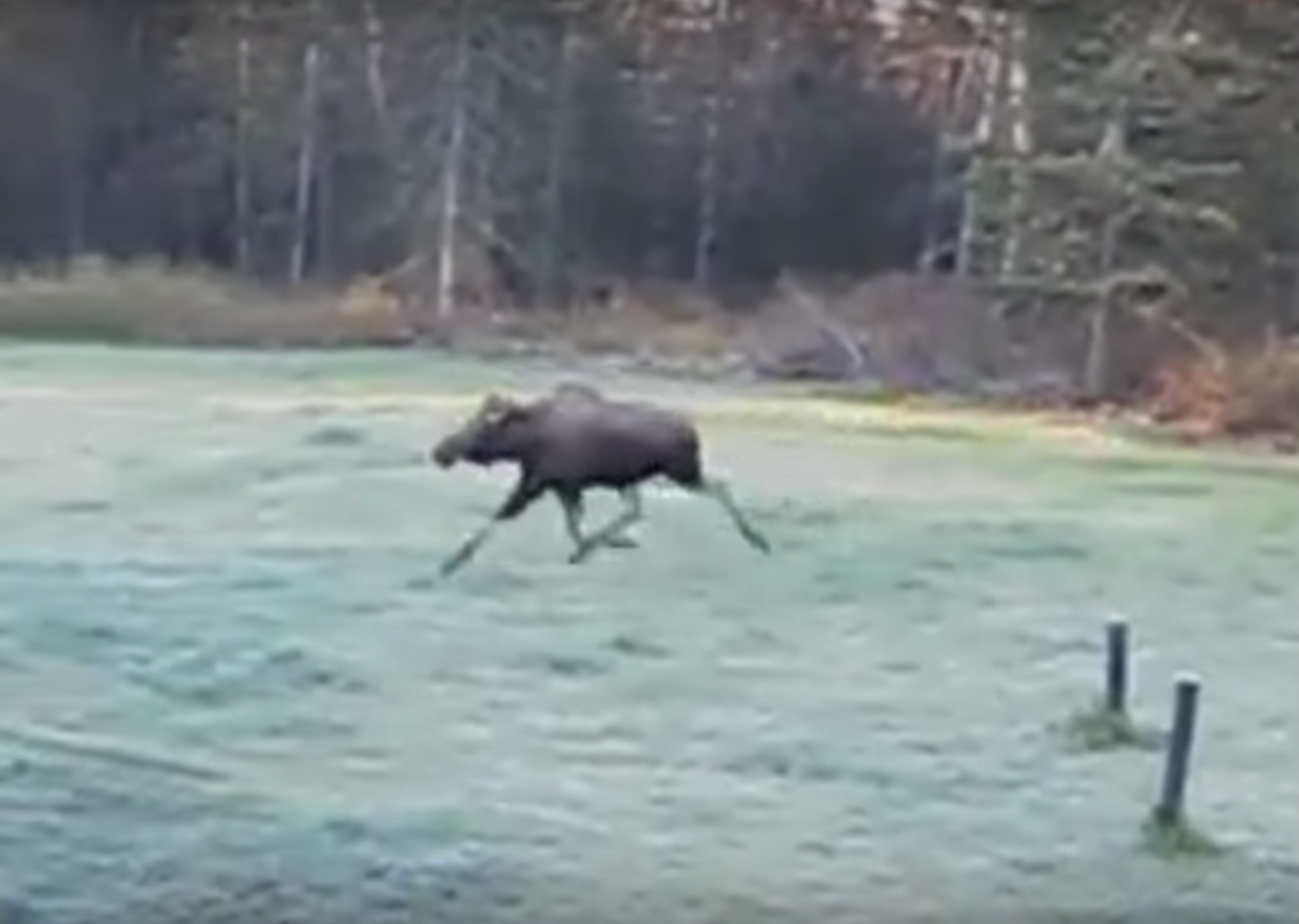
When Amanda Waggoner noticed two moose acting interestingly in her backyard, she did what any self-respecting disciple of the digital age would do: she filmed the encounter and shared it with us (below), stating: ‘[I] don’t know for sure if it’s a mama weaning… but sure does remind me of motherhood.’ Our curiosity captured, we took up the challenge to find out the motive behind the moose’s rather manic behaviour.
Professor Valerius Geist’s first research role as a fresh-faced 21-year-old biology student was to study the behaviour of moose in a park in central British Columbia. He’s now 77—20 years retired—is a Professor Emeritus of Environmental Science at the University of Calgary, has authored, co-authored or edited 16 different books in his field, including one on moose for a general audience, not to mention several significant scientific studies into the animal’s behaviour.
We asked the Professor about the excited moose movements exhibited in this video; discovering that Amanda’s guess wasn’t too far off after all.
Hello Professor. Thank you for taking the time to chat with us. First off, I wished to ask about the behaviour exhibited by the moose in our readers video—can you please shed a bit of light as to what’s going on here?
To start, one must know that moose have a rather sweet disposition, like friendly dogs six foot high at the shoulder. Secondly, they form very close, life-long, attachments to their mothers, including human ‘mothers’. And that holds true even if they are chased off by their mothers, as all moose are when their mothers give birth to another calf in late spring.
In the video we see two female moose, an old cow and a yearling cow, both in excellent condition. That suggests that the older female lost here current calf quite early, most likely to bears, which would explain why she is in such fine condition. The yearling cow has also done very well.
The exuberance of the yearling cow is likely due to meeting her mother after a lengthy separation. That is exactly the behaviour reported for tame moose after a long separation from their human ‘mother’. Hand raised moose could not contain themselves when meeting their ‘mother’ after a long separation—and tame moose wander off very very far, just as wild ones do. The old cow is, clearly, also interested in the yearling female and runs after it.
Moreover, she does not attack the yearling as she would have done if the yearling were a stranger. I have seen these exuberant runs by moose primarily during play in spring time, and others have reported such, as when moose play, for instance, in the surf on ocean shores. Remember, this yearling cow moose had been driven off earlier by the cow when she gave birth to a baby.
The yearling cow, for all her exuberance, still shows respect for the large cow, and the large cow still stiffens into a warning pose when the yearling gets too close. I suspect the two will run together at least while forage is good.
In the video, one of the moose make some impressively loud calls. Could you run through with us what repertoire of noises the animals generally have at their disposal, and what they tend to mean?
Moose have one basic call, which, however they can vary quite drastically. The call in the video emanates from the yearling. It’s vocalisation of excitement.
This video clip was recorded in Alaska. In your experience, does moose behaviour differ greatly across their range? For instance would a Russian or Estonian moose likely act the same way?
Social behaviour is extremely conservative in evolution, and while the West-Siberian/European moose and the East Siberian/American moose differ in external appearance and drastically in antler mass and morphology, they do not differ in social behaviour. At least to my knowledge.
In your time, what other interesting or unique behavioural habits have you observed in moose that readers might be unaware of?
Probably the least known and most interesting aspects of moose is their behaviour when raised as babies by human hands. Moose are surprisingly smart and have actually rather large brains, compared to domestic animals such as cows or sheep. The latter in particular have suffered a loss of 50% in brain size compared to their wild counterparts.
So, hand-raised moose are sweet and loyal in disposition and surprise their keepers with the inquisitiveness and general ‘braininess’. Even free-living moose in parks, when giving birth, will readily seek out humans to escape predators.
What should people be aware of if they want to film or photograph the animals in the wild?
When observing or photographing, please keep your distance, and leave moose as you find them.
Thanks Professor.
Lovely video!
—
Professor Geist is currently 99.9% of the way through his second book on human evolution, entitled: Condemned to Art and Insanity. Our Natural History. He believes the text will very likely replace his first book on human evolution, published in 1978, as the finest work he’s ever written.
